Abstract
Children were trained on a visual discrimination by stimulus shaping, stimulus fading, or trial-and-error. Those who did not acquire the conditional discrimination received a second, different training. More children initially trained by stimulus shaping acquired the conditional discrimination than did those initially trained with stimulus fading or trial-and-error. After a history of fading or trial-and-error training, children were less likely to acquire the conditional discrimination even after the more successful procedure of shaping was later used.
Full text
PDF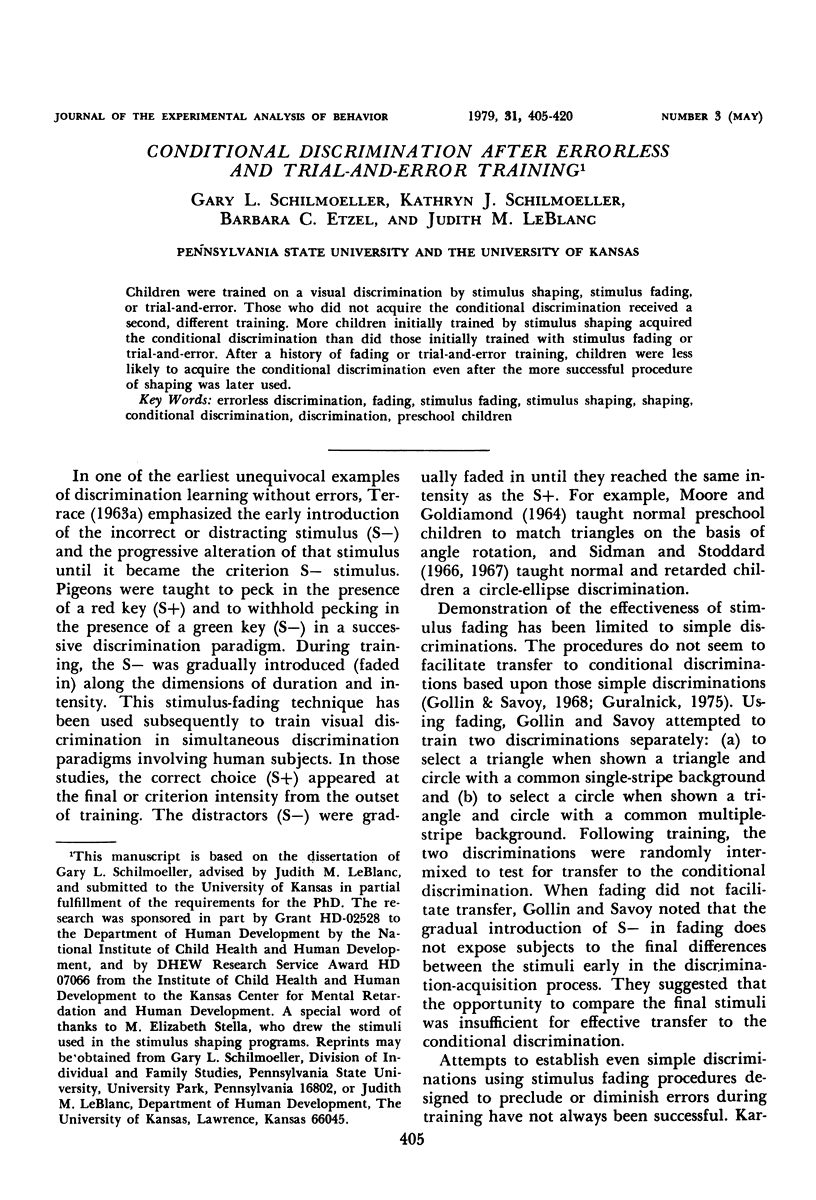
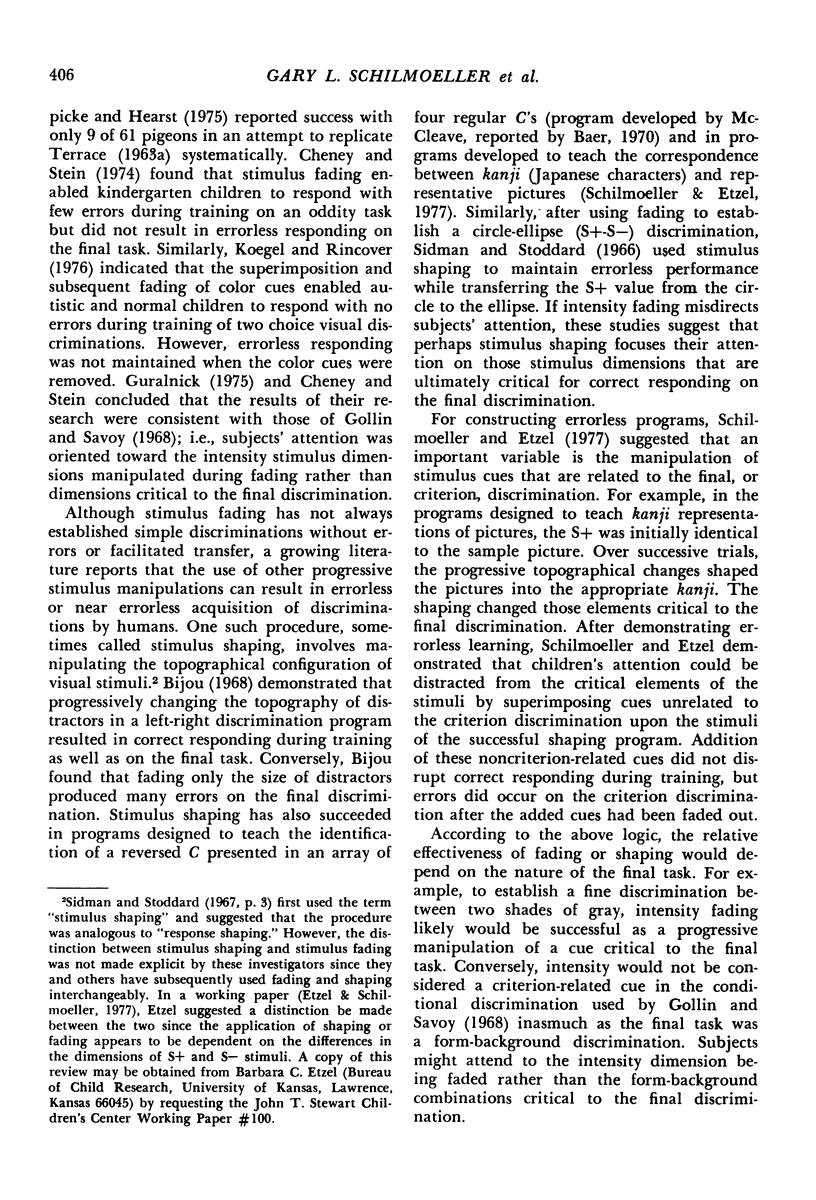
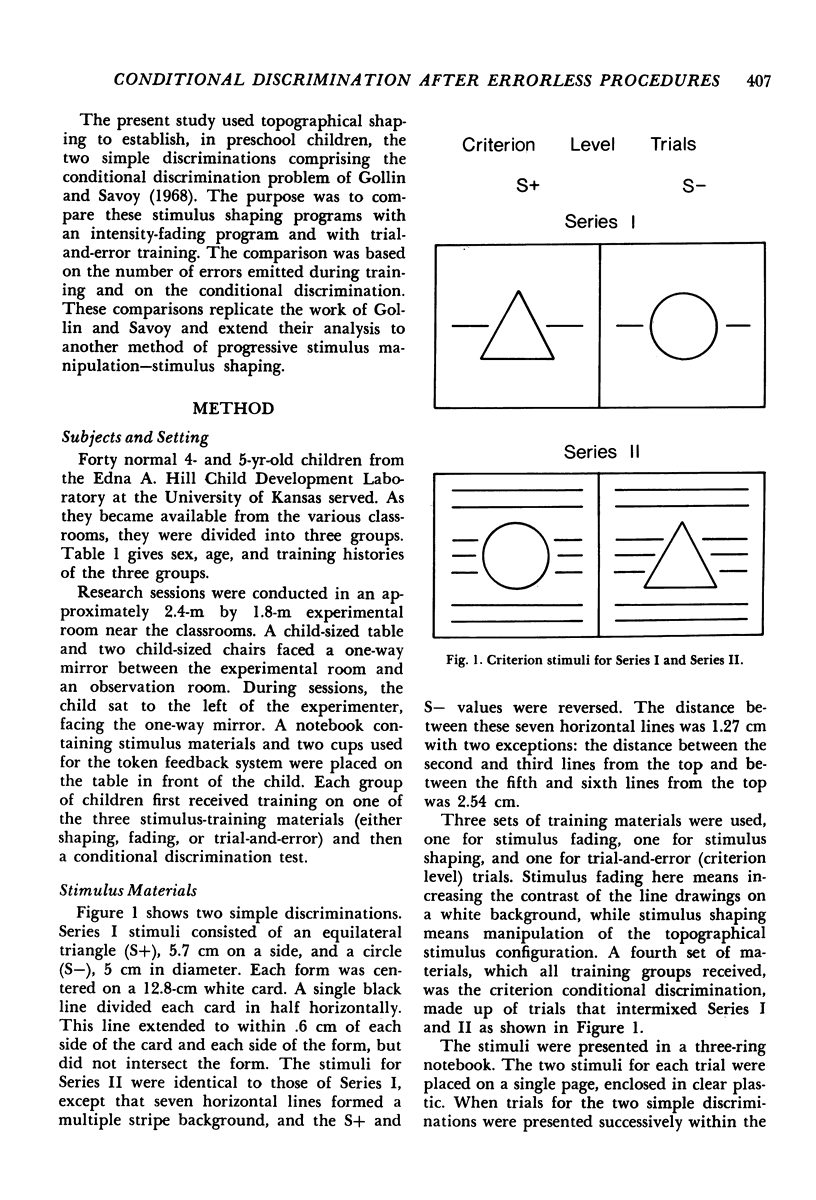
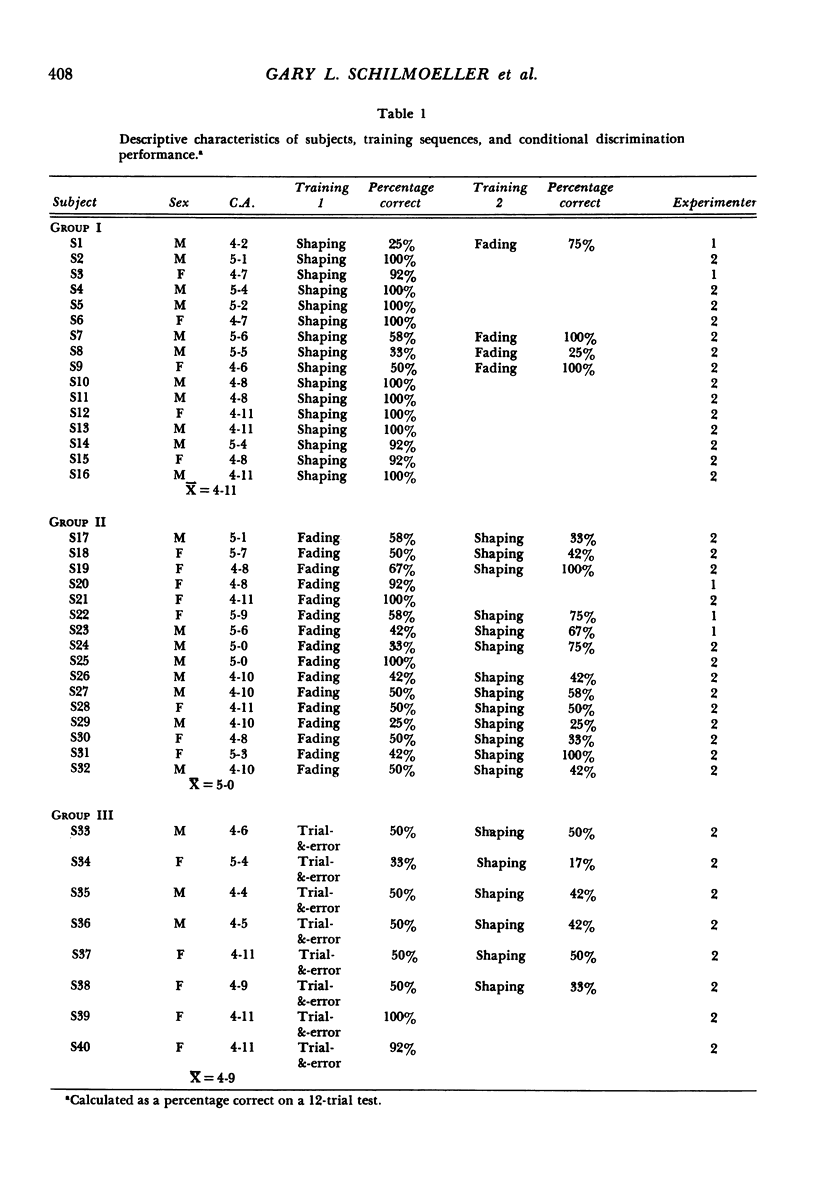
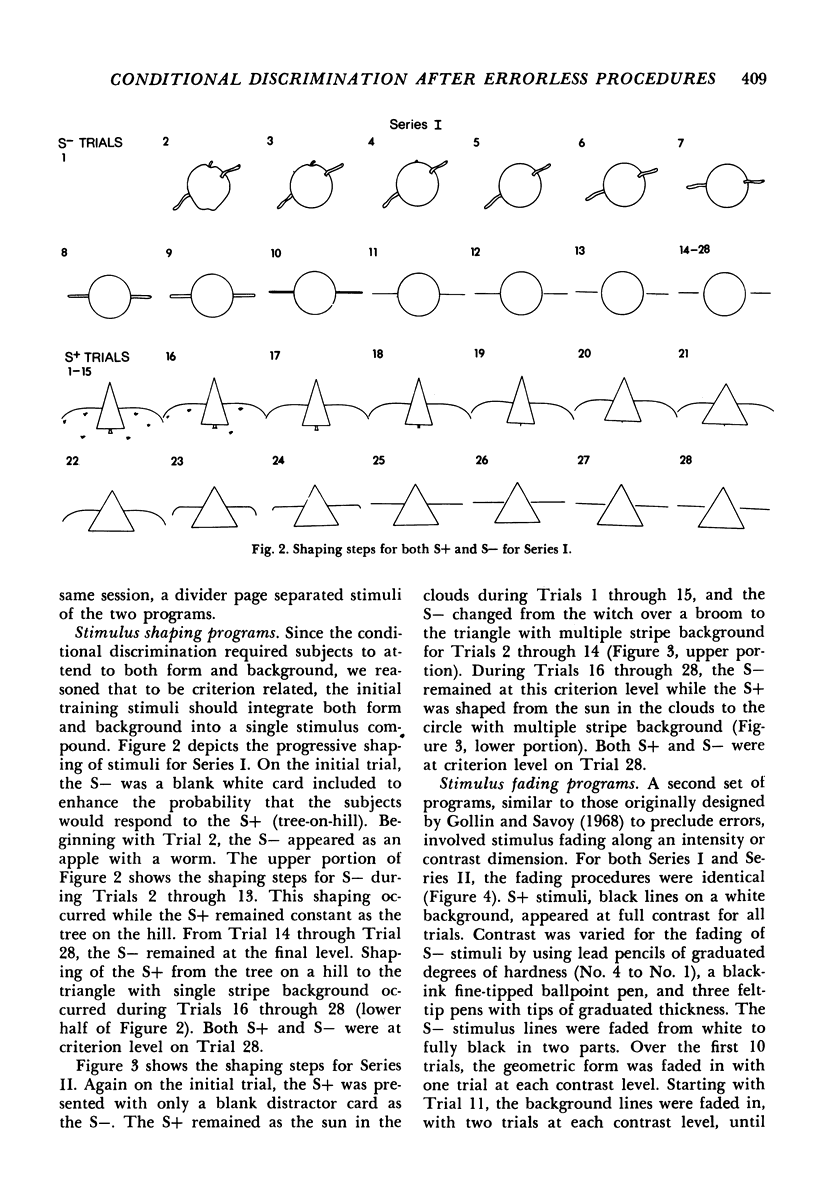
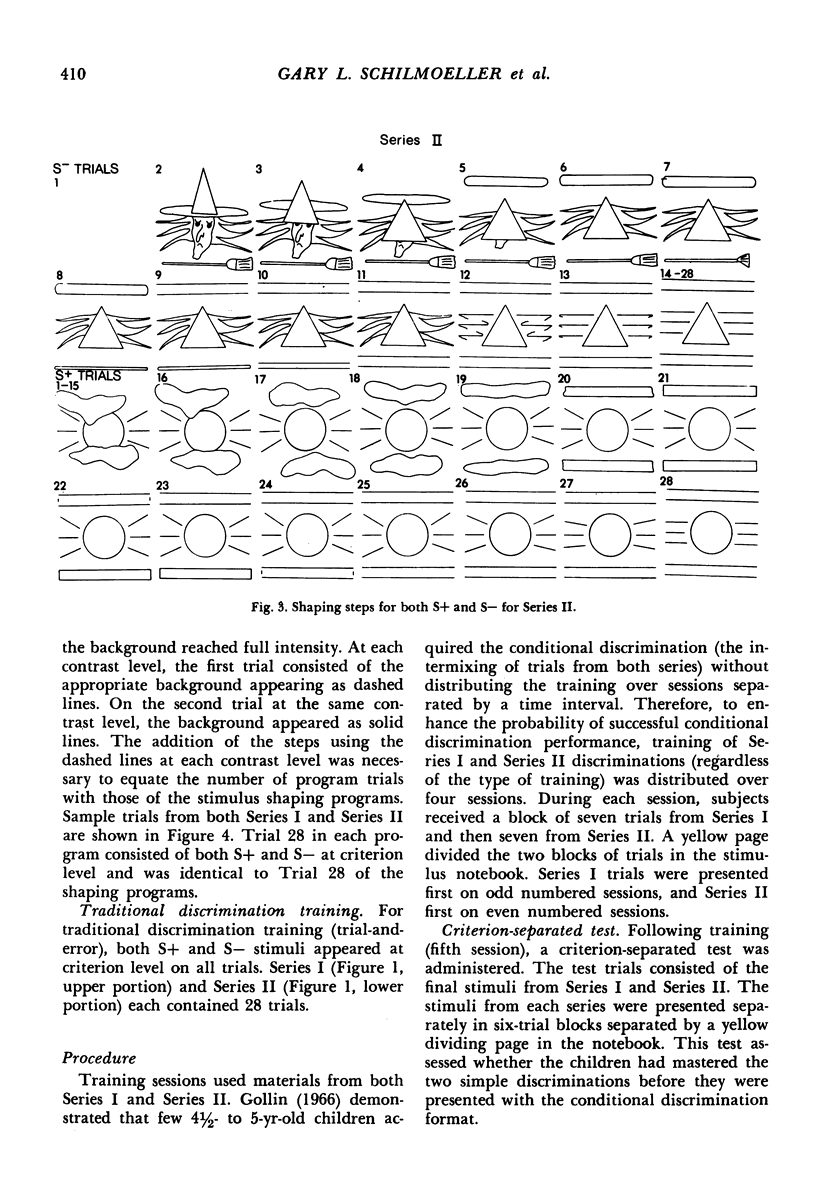
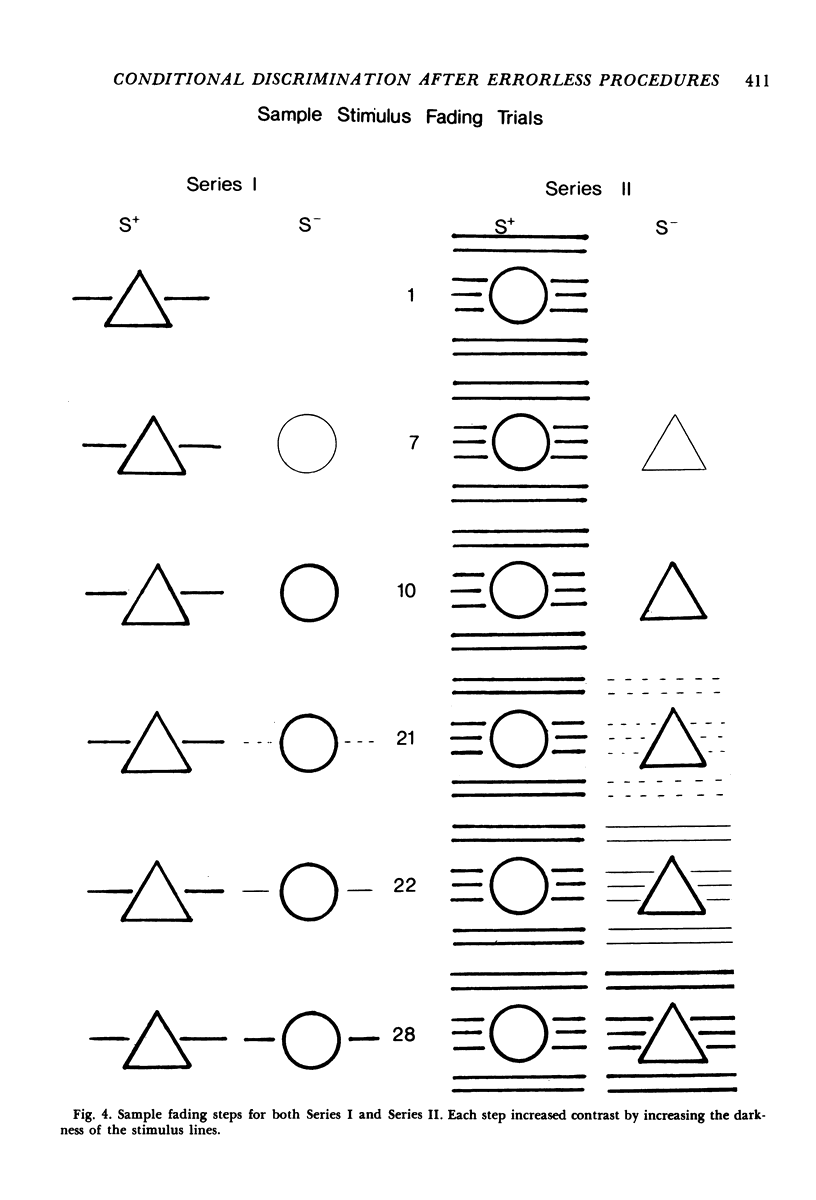
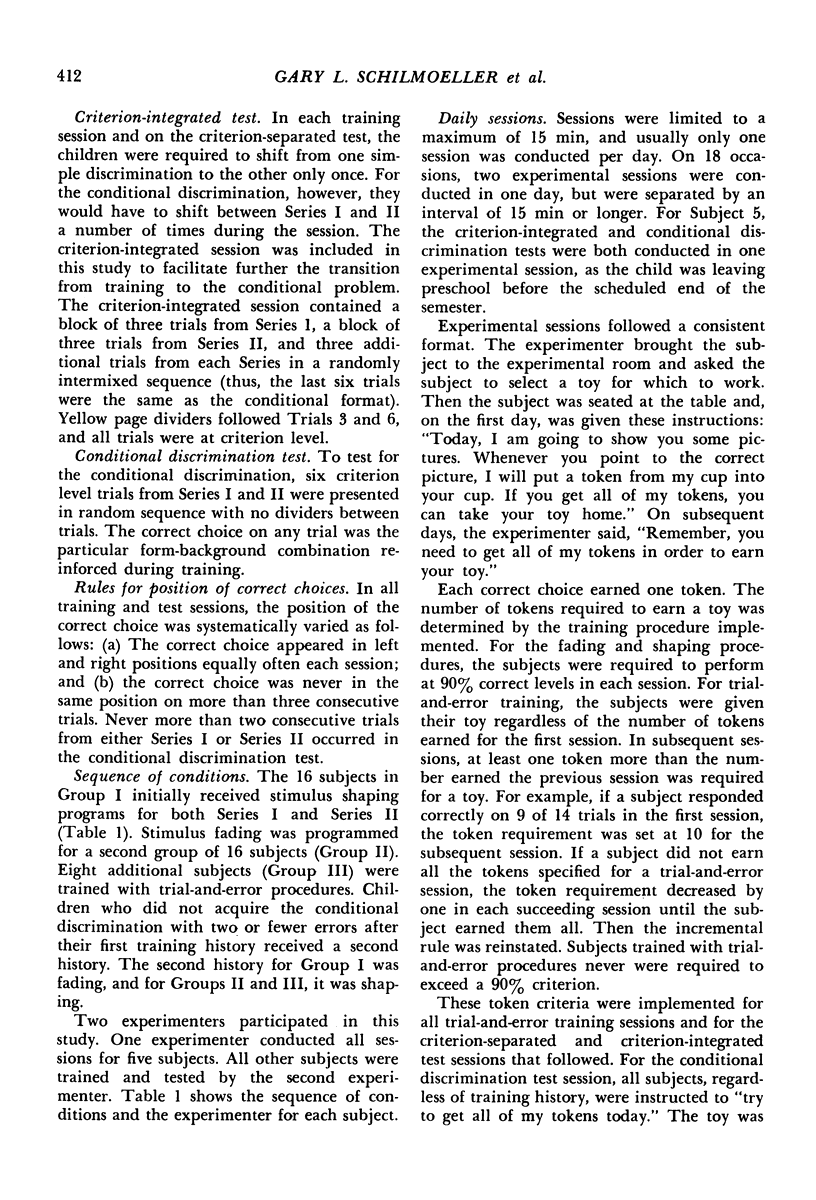
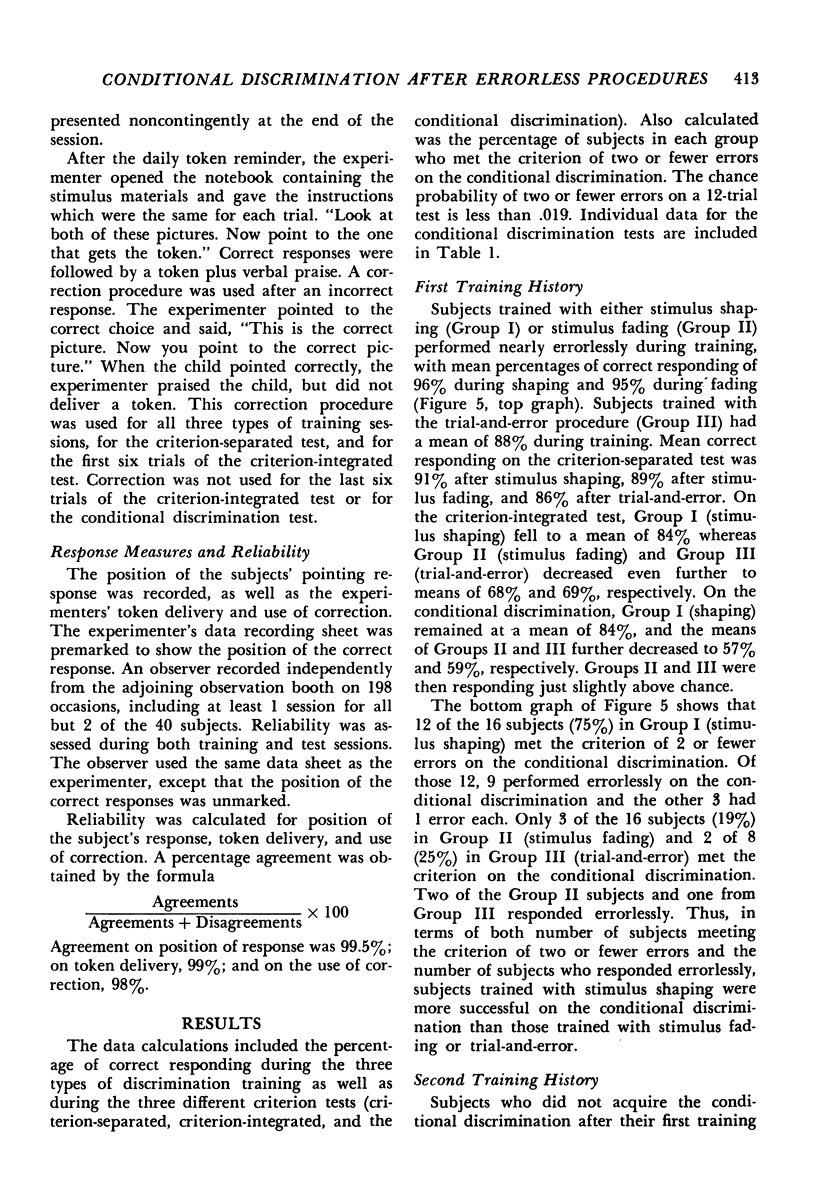
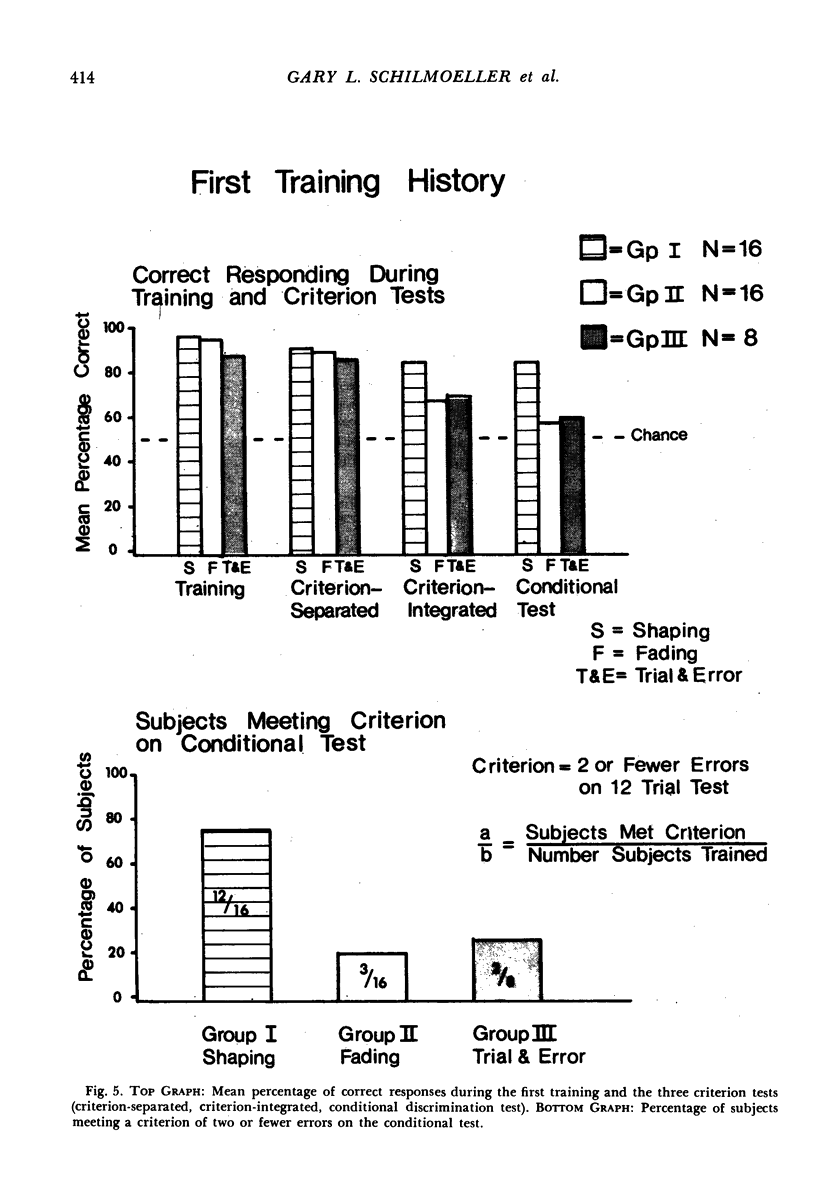
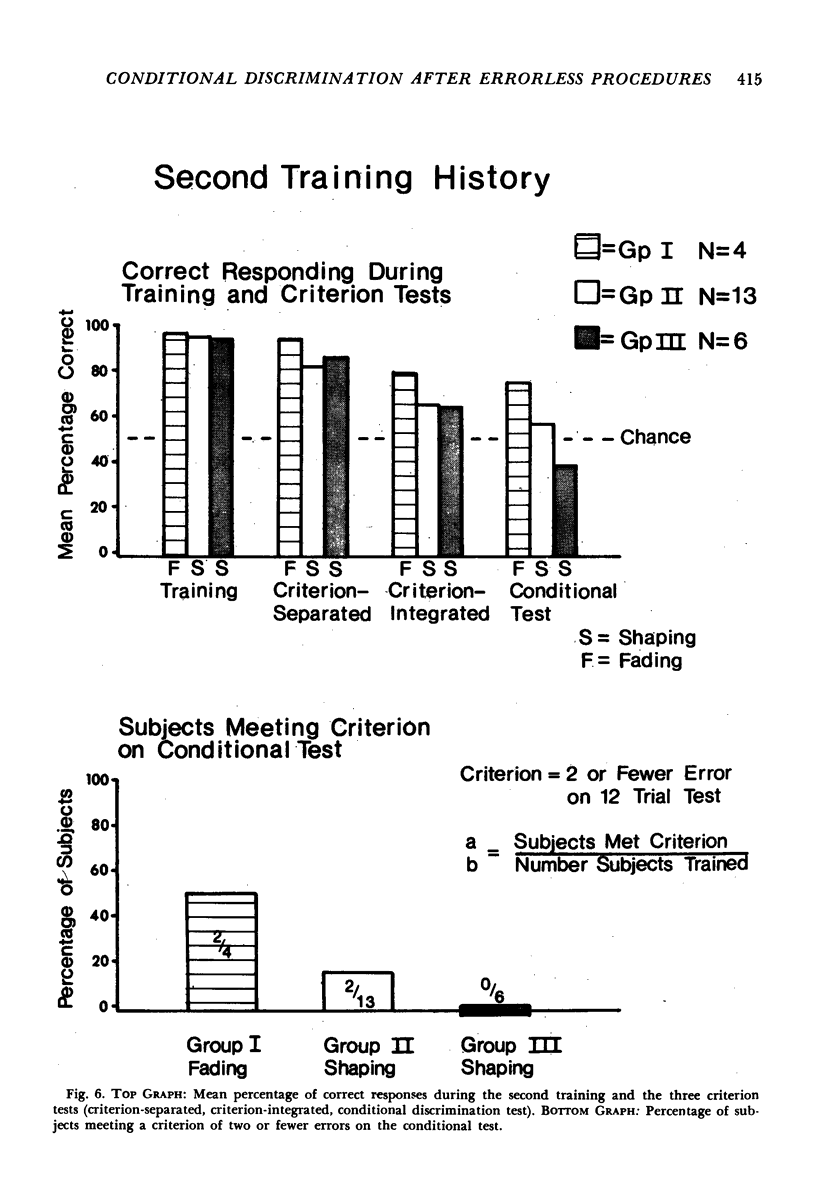
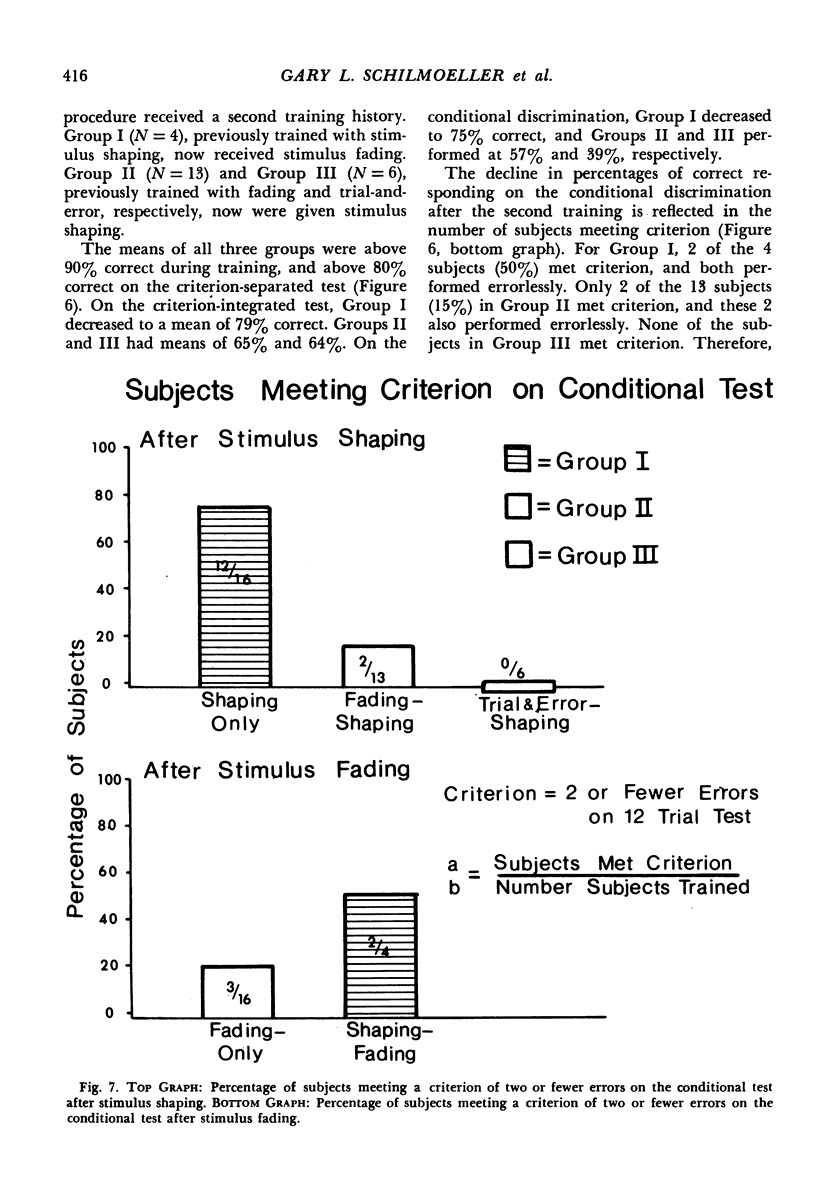
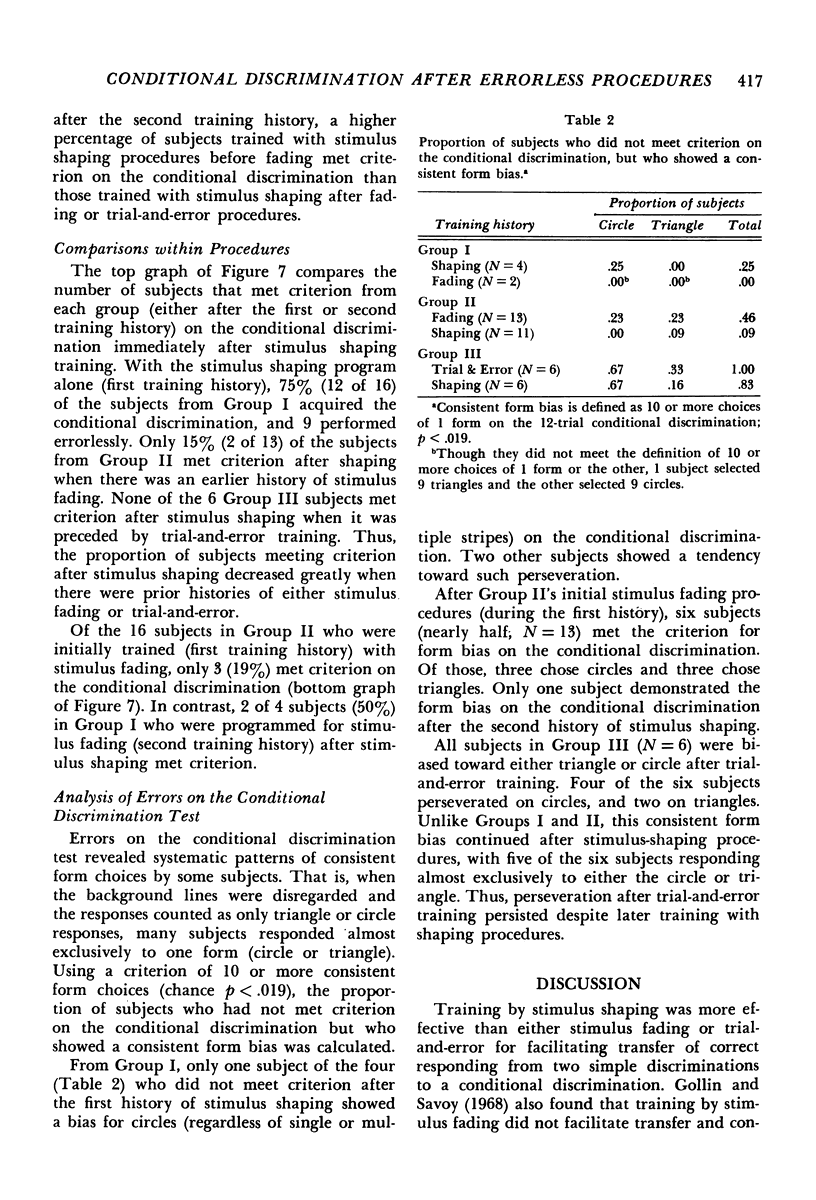
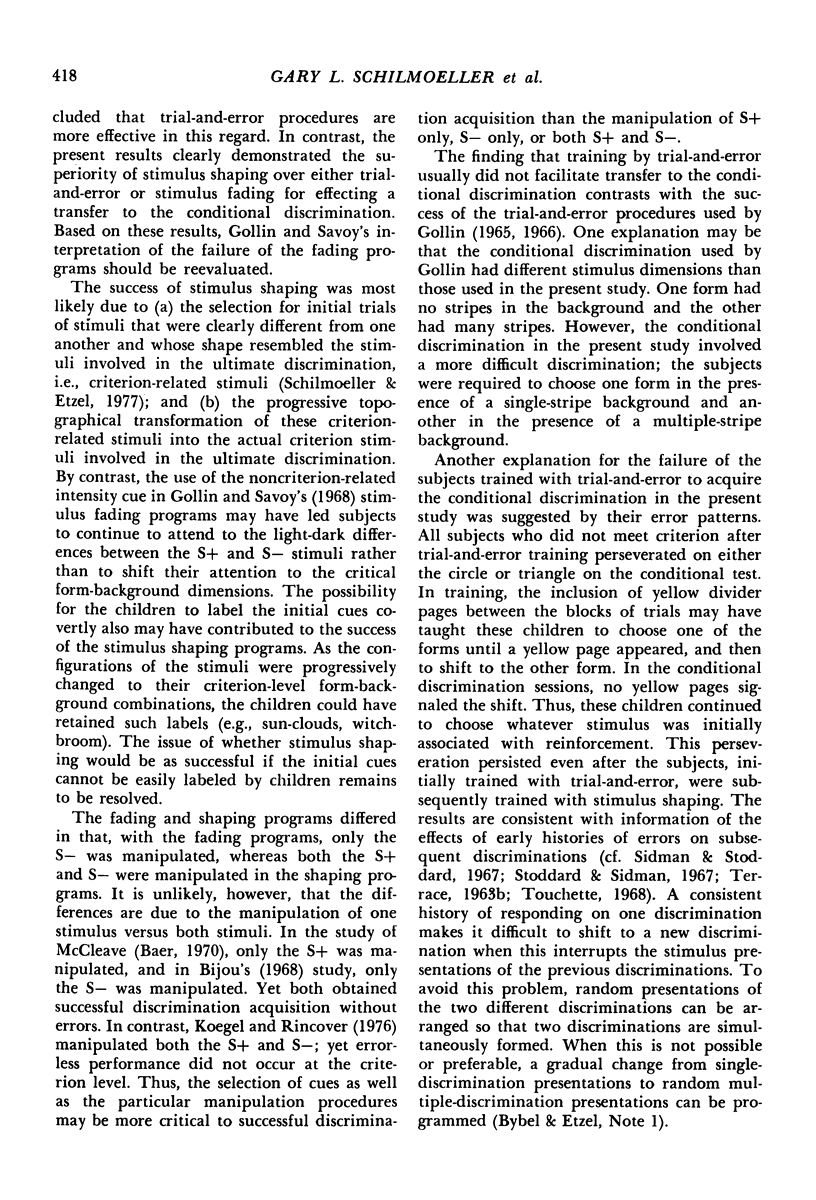
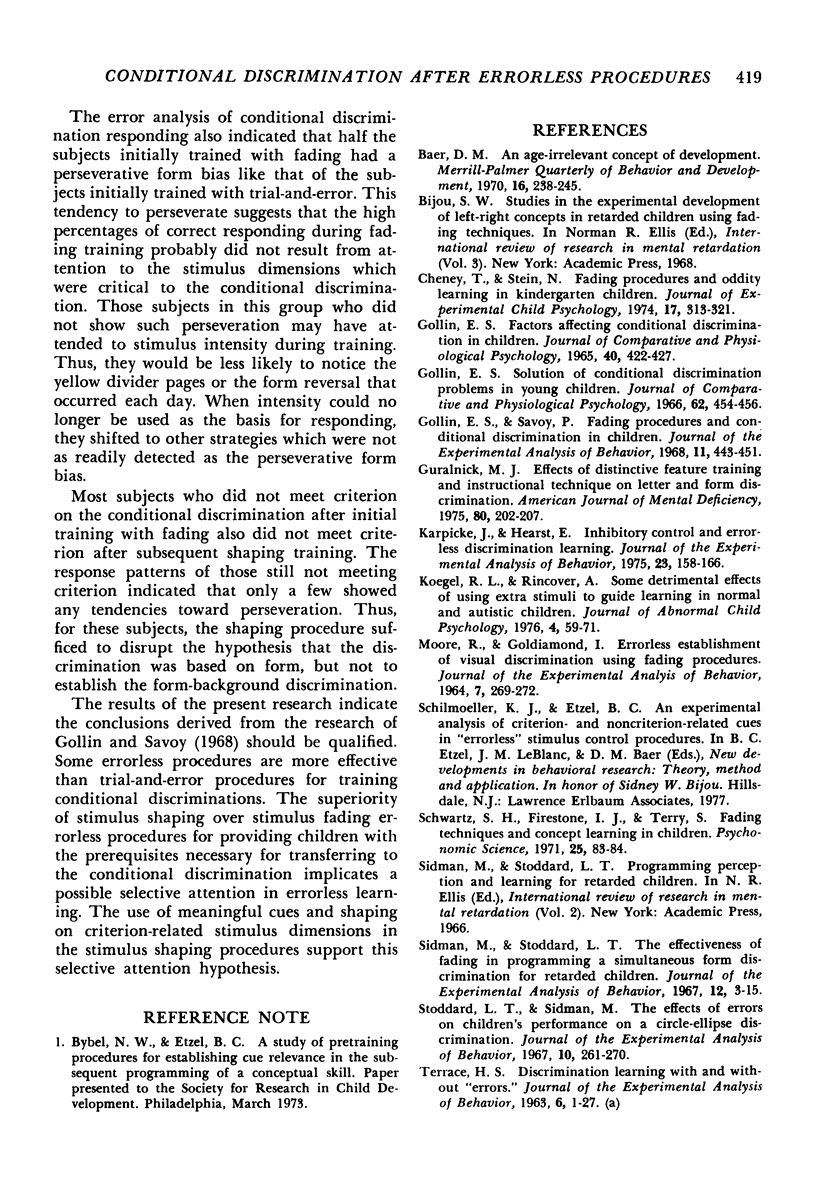
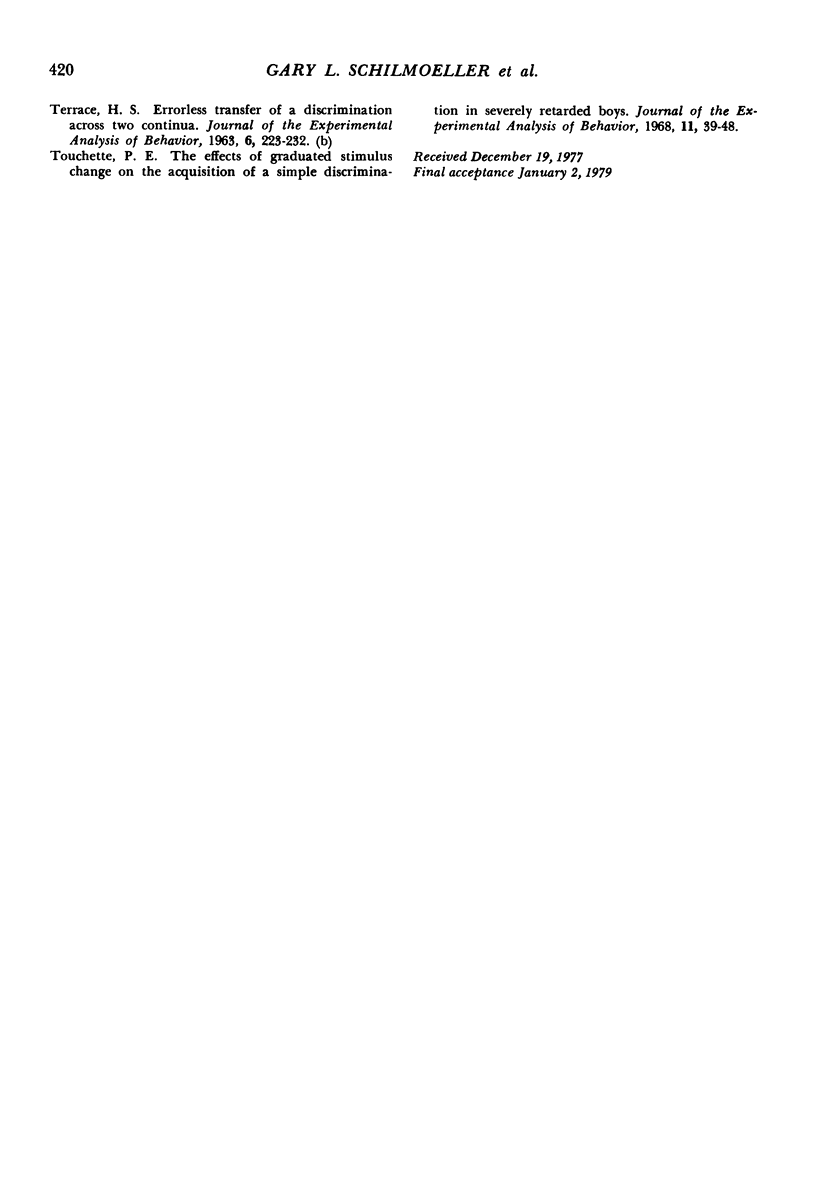
Selected References
These references are in PubMed. This may not be the complete list of references from this article.
- Gollin E. S. Factors affecting conditional discrimination in children. J Comp Physiol Psychol. 1965 Dec;60(3):422–427. doi: 10.1037/h0022583. [DOI] [PubMed] [Google Scholar]
- Gollin E. S., Savoy P. Fading procedures and conditional discrimination in children. J Exp Anal Behav. 1968 Jul;11(4):443–451. doi: 10.1901/jeab.1968.11-443. [DOI] [PMC free article] [PubMed] [Google Scholar]
- Guralnick M. J. Effects of distinctive-feature training and instructional technique on letter and form discrimination. Am J Ment Defic. 1975 Sep;80(2):202–207. [PubMed] [Google Scholar]
- Karpicke J., Hearst E. Inhibitory control and errorless discrimination learning. J Exp Anal Behav. 1975 Mar;23(2):159–166. doi: 10.1901/jeab.1975.23-159. [DOI] [PMC free article] [PubMed] [Google Scholar]
- Koegel R. L., Rincover A. Some detrimental effects of using extra stimuli to guide learning in normal and autistic children. J Abnorm Child Psychol. 1976;4(1):59–71. doi: 10.1007/BF00917605. [DOI] [PubMed] [Google Scholar]
- MOORE R., GOLDIAMOND I. ERRORLESS ESTABLISHMENT OF VISUAL DISCRIMINATION USING FADING PROCEDURES. J Exp Anal Behav. 1964 May;7:269–272. doi: 10.1901/jeab.1964.7-269. [DOI] [PMC free article] [PubMed] [Google Scholar]
- Sidman M., Stoddard L. T. The effectiveness of fading in programming a simultaneous form discrimination for retarded children. J Exp Anal Behav. 1967 Jan;10(1):3–15. doi: 10.1901/jeab.1967.10-3. [DOI] [PMC free article] [PubMed] [Google Scholar]
- Stoddard L. T., Sidman M. The effects of errors on children's performance on a circle-ellipse discrimination. J Exp Anal Behav. 1967 May;10(3):261–270. doi: 10.1901/jeab.1967.10-261. [DOI] [PMC free article] [PubMed] [Google Scholar]
- TERRACE H. S. Errorless transfer of a discrimination across two continua. J Exp Anal Behav. 1963 Apr;6:223–232. doi: 10.1901/jeab.1963.6-223. [DOI] [PMC free article] [PubMed] [Google Scholar]
- Touchette P. E. The effects of graduated stimulus change on the acquisition of a simple discrimination in severely retarded boys. J Exp Anal Behav. 1968 Jan;11(1):39–48. doi: 10.1901/jeab.1968.11-39. [DOI] [PMC free article] [PubMed] [Google Scholar]


